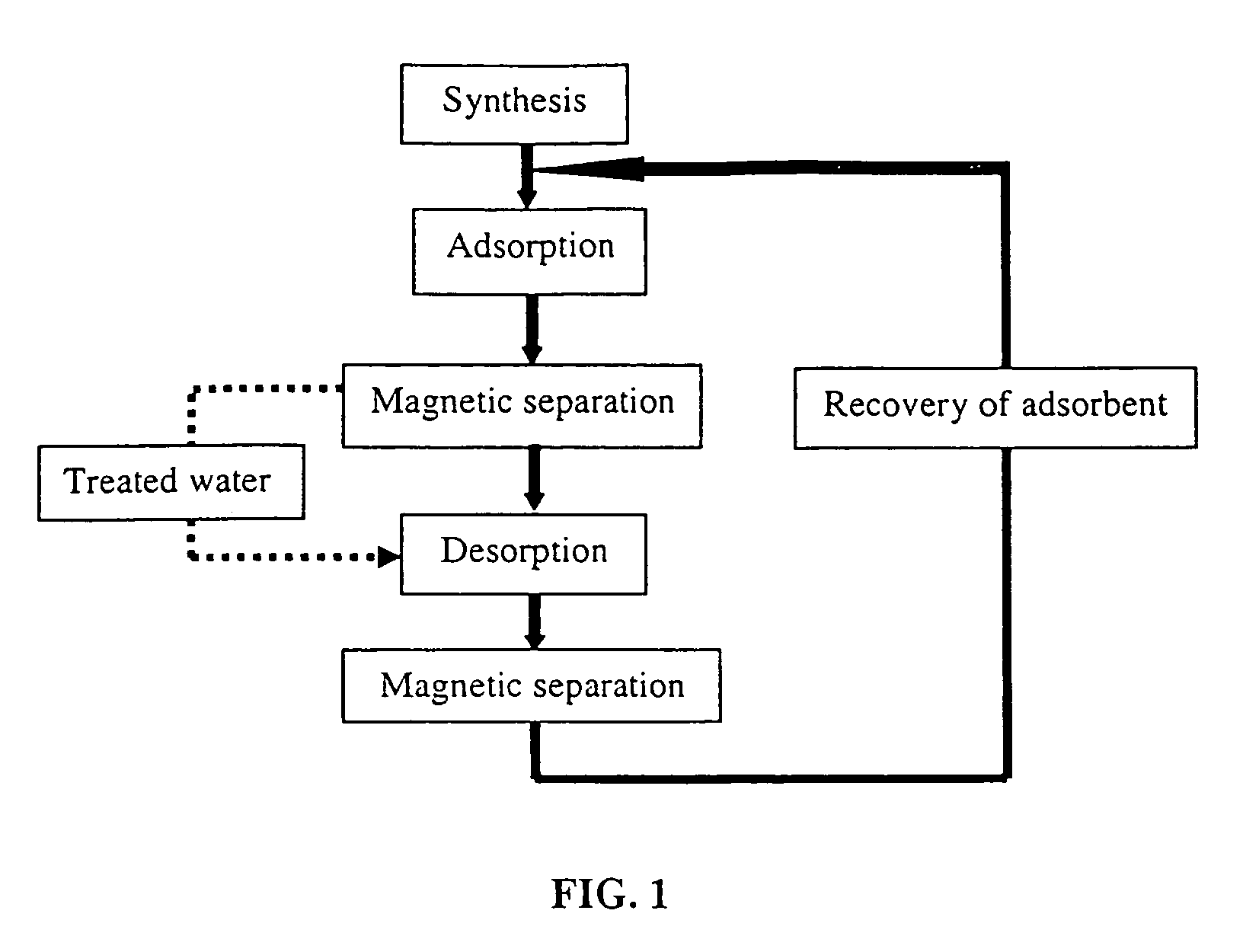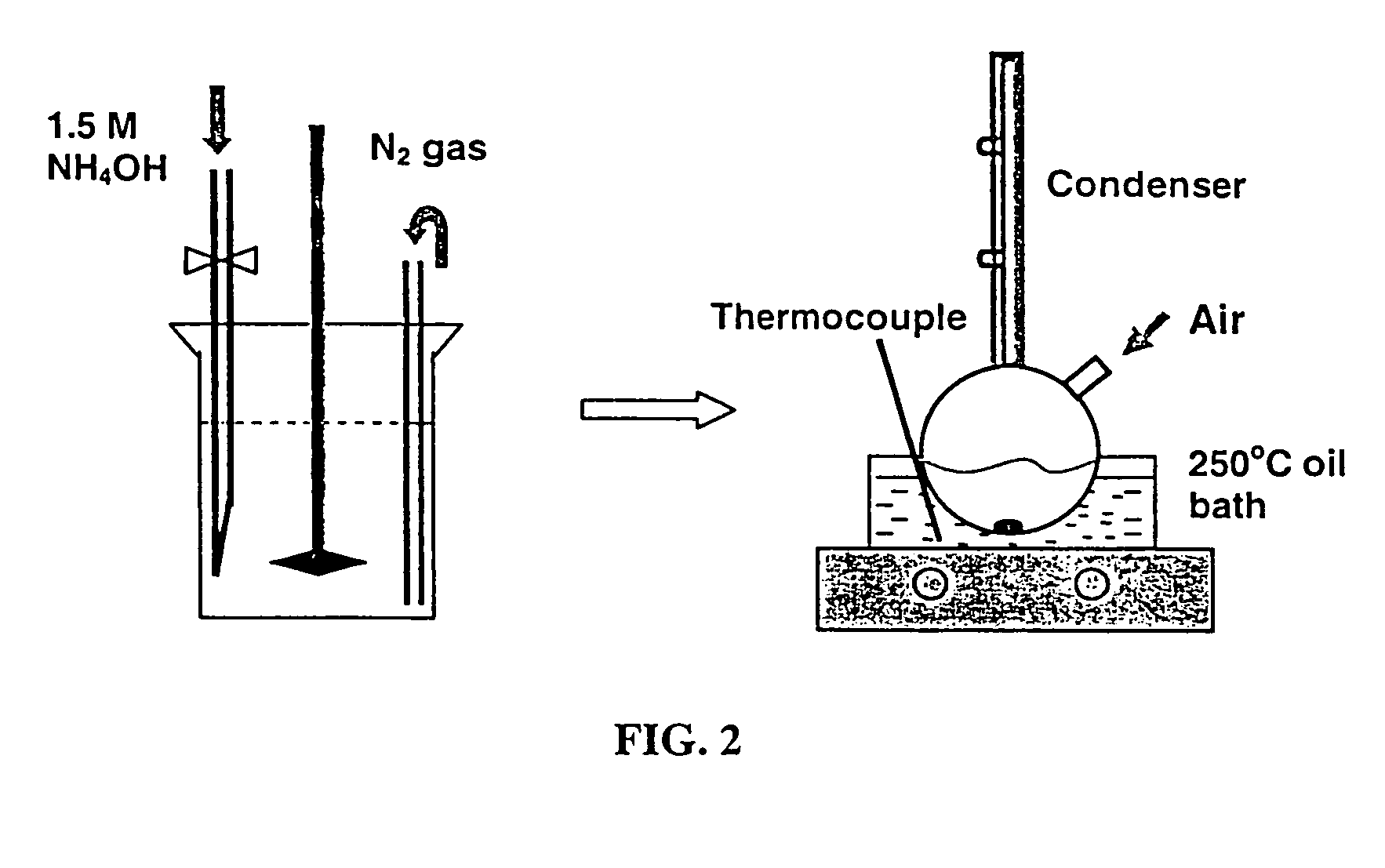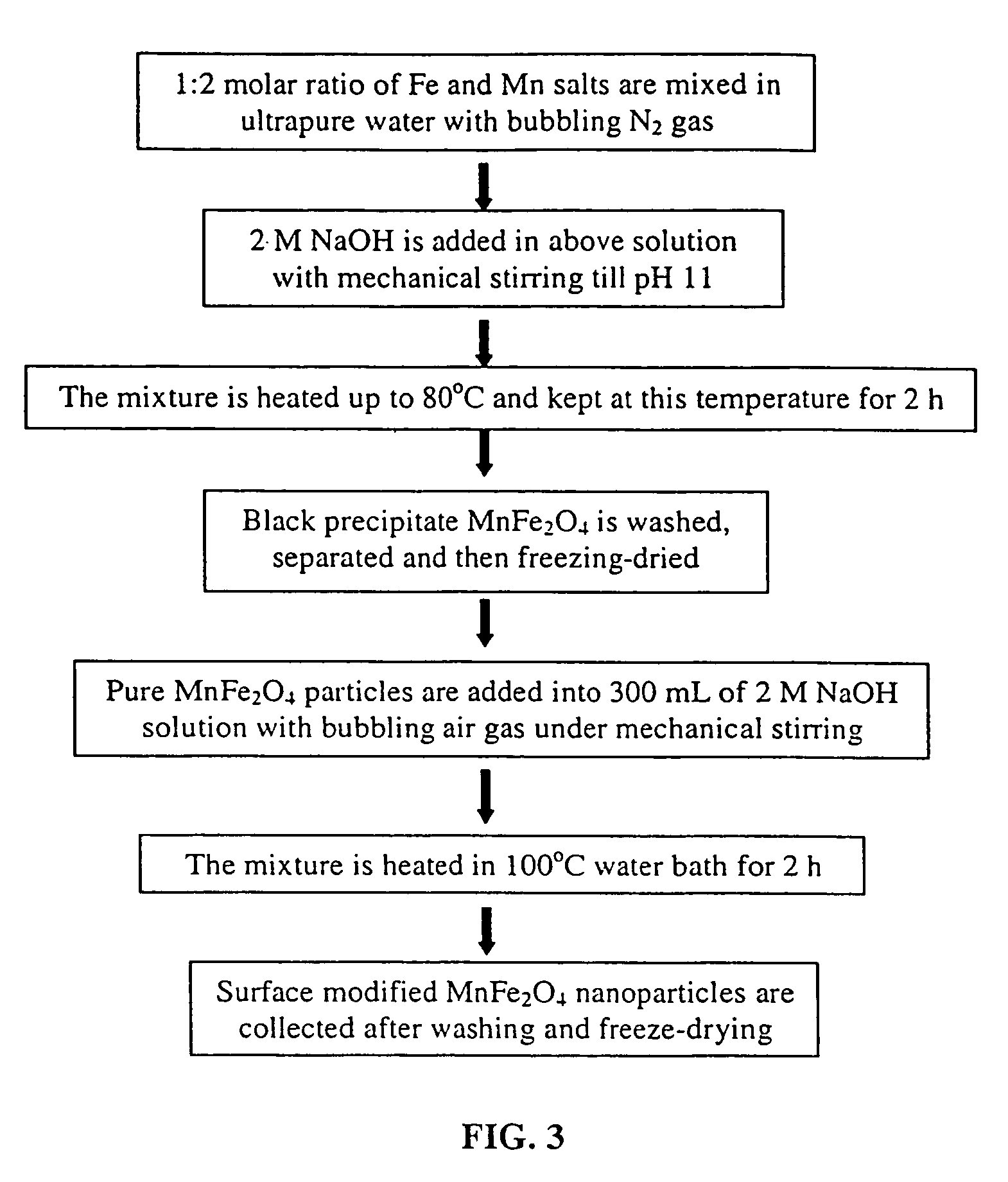Synthesis of modified maghemite and jacobsite nanoparticles
a technology of modified maghemite and jacobsite, which is applied in the field of nanoparticle adsorption, can solve the problems of high capital and operating costs, heavy metal presence in wastewater and surface water, and severe environmental and public health problems, and achieve the removal efficiency of cu. , the effect of short adsorption tim
- Summary
- Abstract
- Description
- Claims
- Application Information
AI Technical Summary
Benefits of technology
Problems solved by technology
Method used
Image
Examples
example 1
[0041]A test was performed to determine the ability of undoped and Al-doped maghemite nanoparticles to remove Cr(VI) from solution. Synthetic wastewater containing 20 ml of 50 mg / L Cr(VI) was mixed with various doses of nanoparticles at a solution pH of 2.5 under a shaking speed of 100 rpm. At equilibrium, the adsorbent was separated completely within 10 seconds with a magnet and the supernatant was collected to measure metal concentration. The results from ICP are shown in Table 1.
[0042]The data show that the concentration of Cr(VI) in solution could be reduced to meet the discharge limit regulated by the U.S. EPA. It seems likely that a further treatment will not be needed.
[0043]
TABLE 1RemovalInitial Cr(VI)MaghemiteRemaining Cr(VI)efficiency(ppm)(g / L)(ppm)(%)50213.274.05030.08>99Al-dopedRemovalInitial Cr(VI)maghemiteRemaining Cr(VI)efficiency(ppm)(g / L)(ppm)(%)5026.487.25030.02>99
example 2
[0044]A test was performed to determine the ability of maghemite nanoparticles to remove Cr(VI), Cu(II) and Ni(II) ions. 5 g / L particles were mixed with 20 ml of 80 mg / L Cr(VI), Cu(II) and Ni(II) at their optimal pH for 10 minutes. The results are shown in Table 2.
[0045]
TABLE 2InitialRemainingconcentrationconcentrationRemoval efficiencyMetal(ppm)(ppb)(%)Cr(VI)8090>99Cu(II)8030>99Ni(II)8030>99
example 3
[0046]A test was performed to determine the ability of modified jacobsite nanoparticles to remove Cr(VI) from wastewater. Various doses of these particles were mixed with 20 ml of 100 mg / L Cr(VI) at pH 2.5 under shaking rate of 100 rpm for 5 minutes. The results for chromium concentration are shown in Table 3.
[0047]
TABLE 3Modified jacobsiteRemovalInitial Cr(VI)doseRemaining Cr(VI)efficiency(ppm)(g / L)(ppm)(%)10035.494.610040.02>9910050.01>99
PUM
| Property | Measurement | Unit |
|---|---|---|
| temperature | aaaaa | aaaaa |
| temperature | aaaaa | aaaaa |
| size | aaaaa | aaaaa |
Abstract
Description
Claims
Application Information
 Login to View More
Login to View More - R&D
- Intellectual Property
- Life Sciences
- Materials
- Tech Scout
- Unparalleled Data Quality
- Higher Quality Content
- 60% Fewer Hallucinations
Browse by: Latest US Patents, China's latest patents, Technical Efficacy Thesaurus, Application Domain, Technology Topic, Popular Technical Reports.
© 2025 PatSnap. All rights reserved.Legal|Privacy policy|Modern Slavery Act Transparency Statement|Sitemap|About US| Contact US: help@patsnap.com



